#The Gather-Ring by Manuel Báez and Charlynne Lafontaine
Photo



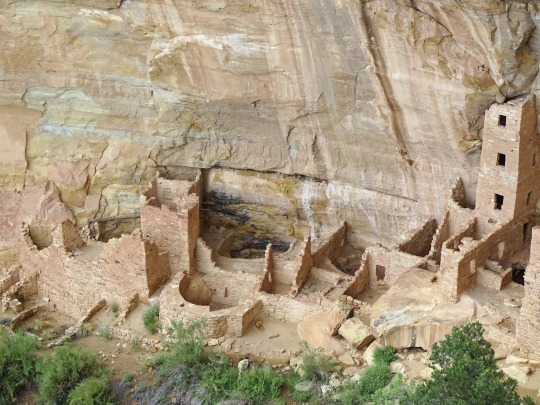
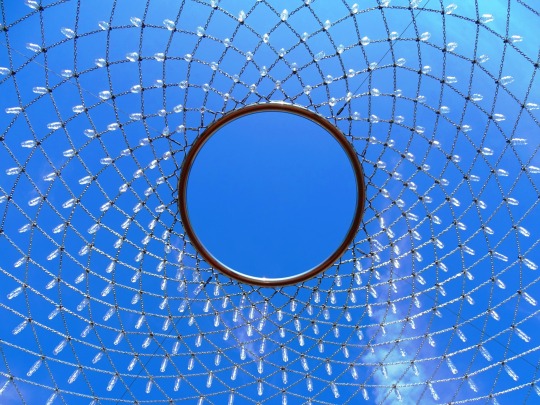


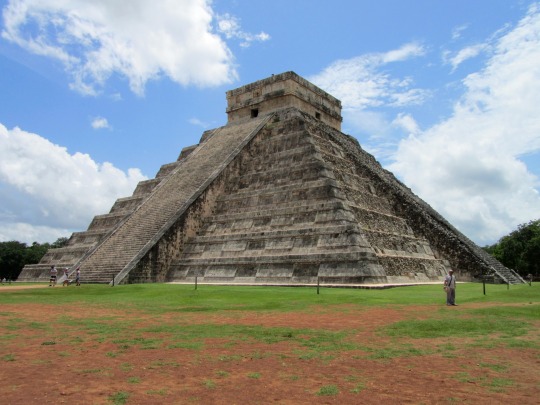


International Day of The World's Indigenous People
The International Day of the World’s Indigenous People on August 9 pays tribute to the indigenous communities of the world. The latest data reveals that there are about 370 to 500 million indigenous people living in 90 countries. These communities are noted to have their own unique set of languages, traditions, cultures, and governing systems. For many indigenous groups, the systems that their ancestors have followed for centuries have stood the test of time by serving them with positive outcomes to date. Many indigenous people’s special bond and connection with nature have also led to the protection of the general environment. However, on the other side, several indigenous communities face difficulties due to a central government’s covert and overt attempts to control their lives. This has led to indigenous people’s rights violations where they would have otherwise ensured peaceful and harmonious lives for them.
History of International Day of The World's Indigenous People
The first International Day of the World’s Indigenous People was officially celebrated in August 1995. The day had been brought into existence when the 49/214 resolution was passed by the U.N. General Assembly on December 23, 1994. August 9 was chosen as the commemorative date because that was when the first meeting of the U.N. Working Group on Indigenous Populations of the Sub-Commission on the Promotion and Protection of Human Rights was held. Every year, the day is honored by governments and organizations holding education forums and conferences to meet and discuss the social issues faced by indigenous groups worldwide. People are also given information on any ongoing and/or upcoming activities and projects that are being undertaken to help the target communities. Every year, the theme changes to shed light on a pressing topic, and the theme for the year 2021 was ‘Leaving no one behind: Indigenous peoples and the call for a new social contract.’
The social contract theme is a call for accountability in the general populations’ interaction with the indigenous communities and their resources. Over the years, many indigenous groups have found themselves to be on a disadvantageous terrain in the face of urban development projects that have destroyed and denigrated their lands and territories. The central governments and builders involved in such projects never sought permission from or even spoke with the indigenous communities before they took the developmental steps. Organizations and agencies like the U.N. and UNESCO have made efforts for constitutional/legislative reforms for dominant indigenous groups. Yet, the efforts must be focussed on bringing everyone together in the cause, leaving none behind.
International Day of The World's Indigenous People timeline
1982 First U.N. Meeting on Indigenous People
The U.N. holds the first meeting on indigenous people by forming the U.N. Working Group on Indigenous Populations of the Sub-Commission on the Promotion and Protection of Human Rights.
1995 International Day of the World’s Indigenous People
The first International Day of the World’s Indigenous People is celebrated by the U.N. General Assembly.
2005 - 2015 Indigenous People’s Decade
The U.N. proclaims 2005 to 2015 to be the ‘Decade of Action and Dignity’ for the indigenous communities.
2019 Indigenous Languages Year
After a startling 2016 report on the danger of more than 2,000 indigenous becoming extinct, the U.N. declares 2019 to be the International Year of Indigenous Languages in order to create awareness.
How To Observe International Day of the World’s Indigenous People
Learn about indigenous groups
Learn an indigenous language
Stand by indigenous groups
History related to indigenous people is always interesting to read and learn about. They have their own sets of beliefs, customs, languages, and cultures. Their daily lifestyles are also often connected with nature, be it animals, trees, certain plants, or lakes/rivers.
The U.N. declared the years 2022 to 2032 the decade for indigenous languages. The goal is to bring to attention the dying languages, since most of them are not taught in schools or are used by the general public. Losing a language is losing an important facet of the history and culture of a people.
The best way to celebrate this day and the rest of the year is by vowing to stand by indigenous groups. The indigenous people have the right to freely choose however they wish to live, much like any other living being on this planet. Protecting their rights also in turn protects your rights in the long run.
5 Interesting Facts About Indigenous People
80% of the world’s biodiversity
4,000 indigenous languages
High poverty rates
Short life spans
Leaders in protecting the environment
Around 80% of the world’s biodiversity is in places where indigenous groups are living.
The 5,000 indigenous communities in the world are credited with having about 4,000 languages.
While the indigenous communities account for only 5% of the world’s population, they make up 15% of the world population that is living in poverty.
Indigenous communities, due to a lack of awareness, have shorter life spans as they die of preventable diseases like malaria and H.I.V.
Studies have shown that the fauna and flora, and biodiversity thrive and flourish where indigenous people reside.
Why International Day of the World’s Indigenous People is Important
It’s a celebration of indigenous people
It’s a celebration of indigenous languages
It’s a celebration of the freedom to live
Indigenous people form an essential and crucial part of not only our planet’s history, but also how human beings have come to make systems to lead fruitful lives. The indigenous people’s cultures, customs, and traditions are interesting to learn about for their uniqueness and for what they teach us about the universe and the bigger picture.
Language, at its core, builds the identity of a people. The involvement of the different phonetics, grammar rules, and formal/informal styles can tell one a lot about where a community has come from, and how their history has shaped them. The same is the case with indigenous languages. The problem lies in their endangerment, and this is why we must strive to preserve them.
The freedom to practice our rights on a piece of land that has shaped our communities for centuries should not be taken away from anyone. The freedom to practice our customs, traditions, and general lifestyles is another important aspect of living a worthwhile life. For these very reasons and many others, we should join indigenous people in their right to live and flourish however they like.
Source
#Native American flute#Monument Valley Navajo Tribal Park#Arizona#USA#Dinosaur National Monument#Diné#Mesa Verde National Park#Colorado#Square Tower House#Jamestown S'Klallam Tribe#Wabanki Canoe#Mexico#Chichén Itzá#The Gather-Ring by Manuel Báez and Charlynne Lafontaine#Ottawa#Cliff Palace#original photography#tourist attraction#landscape#International Day of The World's Indigenous People#9 August#Canada#jingle dance#DayOfTheWorldsIndigenousPeople
11 notes
·
View notes
Photo










National Day of Mourning
The National Day of Mourning takes place on the fourth Thursday of November, this year it’s on November 24. If this date sounds familiar to you, it’s because the fourth Thursday of November also coincides with Thanksgiving in the U.S. Every year on the National Day of Mourning, Native American people in New England gather together to protest. To them, Thanksgiving serves as a reminder of the unjust treatment that Native Americans have received since the 1620 Plymouth landing.
History of National Day of Mourning
The National Day of Mourning reminds us all that Thanksgiving is only part of the story. Native Americans, since 1970, have gathered at noon on Cole’s Hill in Plymouth, Massachusetts, to commemorate a National Day of Mourning on Thanksgiving Day.
Pilgrims landed in Plymouth and established the first colony in 1620. As such, it’s the oldest municipality in New England. Many Native Americans, however, don’t celebrate the arrival of the Pilgrims and other European settlers. Thanksgiving, to them, is a brutal reminder of “the genocide of millions of Native people, the theft of Native lands, and the relentless assault on Native culture.”
They participate as a way to honor Native ancestors and the struggles of Native peoples to survive today. “It is a day of remembrance and spiritual connection as well as a protest of the racism and oppression which Native Americans continue to experience.”
The United American Indians of New England (UAINE) sponsors this event. They maintain that the Pilgrims arrived in North America and claimed tribal land for their own, as opposed to establishing a mutually beneficial relationship with the local inhabitants. UAINE members believe that these settlers “introduced sexism, racism, anti-homosexual bigotry, jails, and the class system.”
The National Day of Mourning generally begins at noon and includes a march through the historic district of Plymouth. While the UAINE encourages people of all backgrounds to attend the protests, only Native speakers are invited to give these speeches about the past, as well as current obstacles their people have overcome. Guests are asked to bring non-alcoholic beverages, desserts, fresh fruits and vegetables, or pre-cooked items. The protest is open to anyone, and has attracted other minority activists.
National Day of Mourning timeline
1998 No permit needed
UAINE receives permission from local authorities to march in protest without having to obtain a permit.
1997 Protests got violent
State troopers use force against protesters who gathered together to observe the 28th annual National Day of Mourning.
1970 National Day of Mourning began
The first annual protest for the National Day of Mourning takes place.
1620 Pilgrims arrived
English separatist Puritans, who had broken away from the Church of England, land at Plymouth Rock. Today we refer to them as Pilgrims.
National Day of Mourning FAQs
What really happened in 1621?
The Pilgrims celebrated their first successful harvest by firing guns and cannons in Plymouth. The noise alarmed ancestors of the Wampanoag Nation who went to investigate. That is how native people came to be present at the first Thanksgiving Are federal offices closed on a national day of mourning?
U.S. government offices are closed on the National Day of Mourning due to the Thanksgiving holiday. What happens on the National Day of Mourning?
Native Americans and supporters gather in Plymouth to “mourn our ancestors and the genocide of our peoples and the theft of our lands.”
How to Observe National Day of Mourning
Brush up on your history
Learn more about the United American Indians of New England (UAINE)
Attend a protest
Do you know much about the first Thanksgiving? Do some research online, stop by your local library, or watch a documentary that will help give you a better understanding of what Native Americans actually went through.
UAINE is responsible for helping the National Day of Mourning protest take shape. To observe this important day, take some time to learn about about the UAINE. It's a fascinating organization that has done a great deal to promote better treatment for the Native American people.
Protesters gather on Cole's Hill, a location overlooking Plymouth Rock, in Massachusetts. Everyone is welcome to observe these gatherings, and recently, other minority groups have started to become involved in the events of this day.
4 Reasons To Thank Native Americans
They've been here a while
Thank you for your service
Your great-grandma is who?
An important vocabulary lesson
Native Americans have existed in what is now known as the United States since 12,000 BC.
Although they were not considered American citizens, over 8,000 Native Americans served in the military in World War I.
Many of the first families who settled in Virginia trace their roots directly back to Pocahontas.
A bunch of Native American words have made their way into the English language; for example, coyote, tomato, poncho, potato, and chia.
Why National Day of Mourning is Important
It serves as an important history lesson
It's a time to come together
It shifts our attention away from turkey
Textbooks often glaze over the unjust treatment of Native Americans. The National Day of Mourning, however, is a reminder that the people native to the Americas have been the recipients of a great deal of unfair treatment. It's important to discuss.
For protesters, the National Day of Mourning serves as a time to rally together to advocate for what they believe in. UAINE has worked to improve relations between the government and native people.
Yes, Thanksgiving can be a great day filled with tons of good food and time spent with loving family and friends. However, the mission behind the National Day of Mourning is to highlight that the Thanksgiving holiday is actually quite painful for some people. For quite a few Native Americans in New England, Thanksgiving marks a time when their ancestors were treated poorly.
Source
#Navajo#Diné#Monument Valley Navajo Tribal Park#Utah#Arizona#USA#Dinosaur National Monument#Mesa Verde National Park#Colorado#travel#Square Tower House#Canada#original photography#Klahowya Village#Vancouver#Holbrook#The Gather-Ring by Manuel Báez and Charlynne Lafontaine#Ottawa#National Day of Mourning#24 November 2022#NationalDayofMourning#native american#Wabanki Canoe#Founding Fathers by Dale Faulstich#Jamestown S'Klallam Tribe#National Day of Mourning#fourth Thursday in November#food
24 notes
·
View notes
Text
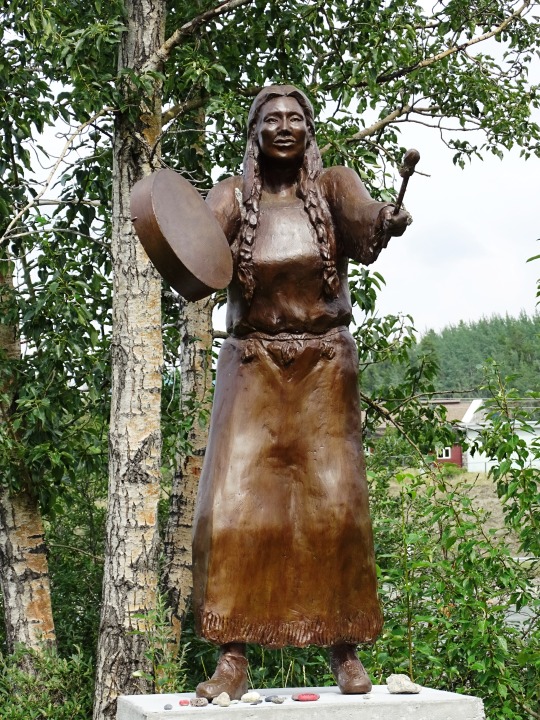

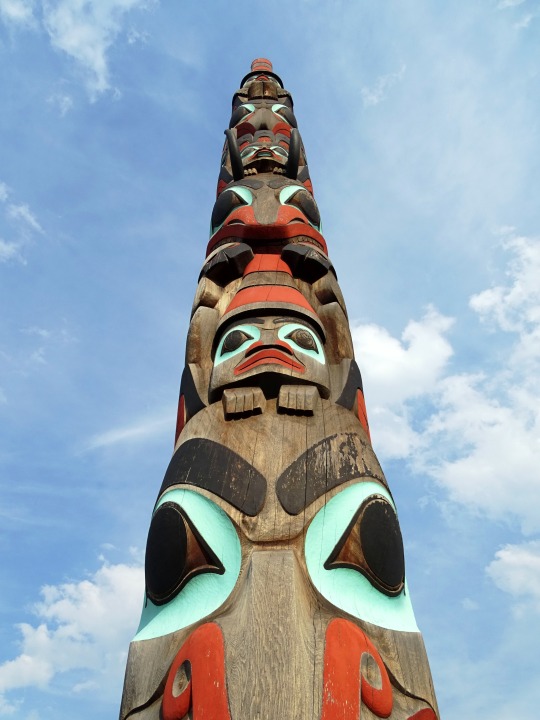




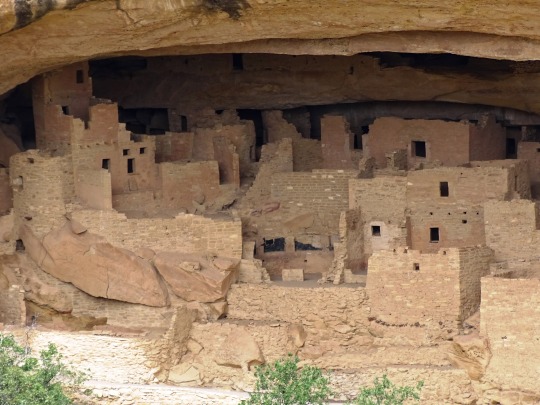
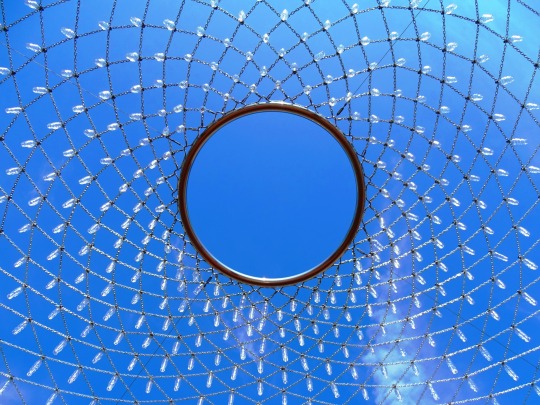


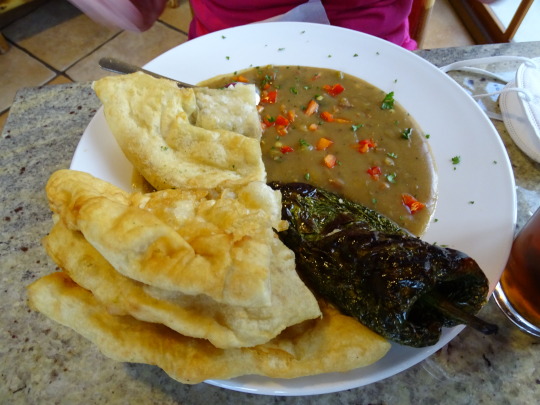
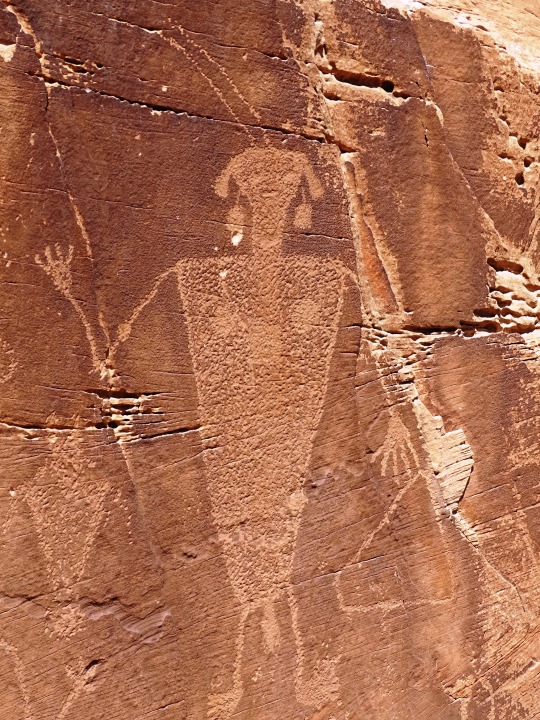
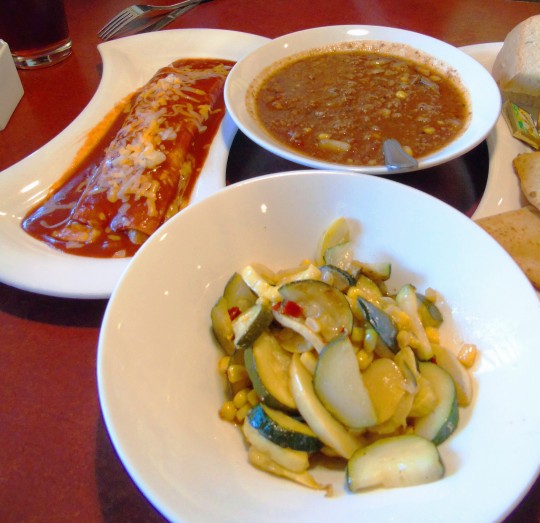


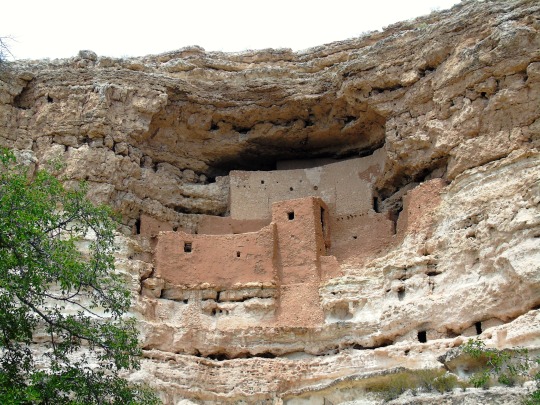
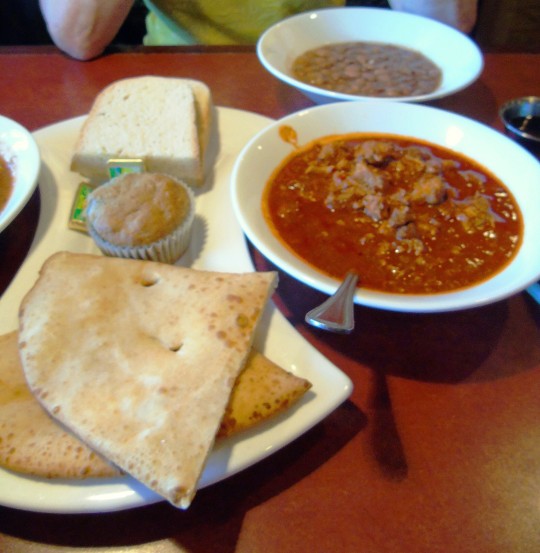
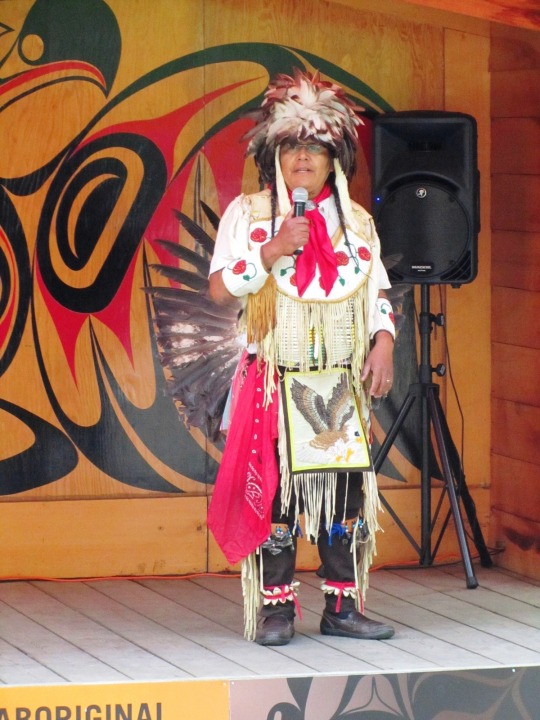
National Day of Mourning
The National Day of Mourning takes place on the fourth Thursday of November, this year it’s on November 23. If this date sounds familiar to you, it’s because the fourth Thursday of November also coincides with Thanksgiving in the U.S. Every year on the National Day of Mourning, Native American people in New England gather together to protest. To them, Thanksgiving serves as a reminder of the unjust treatment that Native Americans have received since the 1620 Plymouth landing.
History of National Day of Mourning
The National Day of Mourning reminds us all that Thanksgiving is only part of the story. Native Americans, since 1970, have gathered at noon on Cole’s Hill in Plymouth, Massachusetts, to commemorate a National Day of Mourning on Thanksgiving Day.
Pilgrims landed in Plymouth and established the first colony in 1620. As such, it’s the oldest municipality in New England. Many Native Americans, however, don’t celebrate the arrival of the Pilgrims and other European settlers. Thanksgiving, to them, is a brutal reminder of “the genocide of millions of Native people, the theft of Native lands, and the relentless assault on Native culture.”
They participate as a way to honor Native ancestors and the struggles of Native peoples to survive today. “It is a day of remembrance and spiritual connection as well as a protest of the racism and oppression which Native Americans continue to experience.”
The United American Indians of New England (UAINE) sponsors this event. They maintain that the Pilgrims arrived in North America and claimed tribal land for their own, as opposed to establishing a mutually beneficial relationship with the local inhabitants. UAINE members believe that these settlers “introduced sexism, racism, anti-homosexual bigotry, jails, and the class system.”
The National Day of Mourning generally begins at noon and includes a march through the historic district of Plymouth. While the UAINE encourages people of all backgrounds to attend the protests, only Native speakers are invited to give these speeches about the past, as well as current obstacles their people have overcome. Guests are asked to bring non-alcoholic beverages, desserts, fresh fruits and vegetables, or pre-cooked items. The protest is open to anyone, and has attracted other minority activists.
National Day of Mourning timeline
1998
No permit needed
UAINE receives permission from local authorities to march in protest without having to obtain a permit.
1997
Protests got violent
State troopers use force against protesters who gathered together to observe the 28th annual National Day of Mourning.
1970
National Day of Mourning began
The first annual protest for the National Day of Mourning takes place.
1620
Pilgrims arrived
English separatist Puritans, who had broken away from the Church of England, land at Plymouth Rock. Today we refer to them as Pilgrims.
National Day of Mourning FAQs
What really happened in 1621?
The Pilgrims celebrated their first successful harvest by firing guns and cannons in Plymouth. The noise alarmed ancestors of the Wampanoag Nation who went to investigate. That is how native people came to be present at the first Thanksgiving
Are federal offices closed on a national day of mourning?
U.S. government offices are closed on the National Day of Mourning due to the Thanksgiving holiday.
What happens on the National Day of Mourning?
Native Americans and supporters gather in Plymouth to “mourn our ancestors and the genocide of our peoples and the theft of our lands.”
How to Observe National Day of Mourning
Brush up on your history: Do you know much about the first Thanksgiving? Do some research online, stop by your local library, or watch a documentary that will help give you a better understanding of what Native Americans actually went through.
Learn more about the United American Indians of New England (UAINE): UAINE is responsible for helping the National Day of Mourning protest take shape. To observe this important day, take some time to learn about about the UAINE. It's a fascinating organization that has done a great deal to promote better treatment for the Native American people.
Attend a protest: Protesters gather on Cole's Hill, a location overlooking Plymouth Rock, in Massachusetts. Everyone is welcome to observe these gatherings, and recently, other minority groups have started to become involved in the events of this day.
4 Reasons To Thank Native Americans
They've been here a while: Native Americans have existed in what is now known as the United States since 12,000 BC.
Thank you for your service: Although they were not considered American citizens, over 8,000 Native Americans served in the military in World War I.
Your great-grandma is who?: Many of the first families who settled in Virginia trace their roots directly back to Pocahontas.
An important vocabulary lesson: A bunch of Native American words have made their way into the English language; for example, coyote, tomato, poncho, potato, and chia.
Why National Day of Mourning is Important
It serves as an important history lesson: Textbooks often glaze over the unjust treatment of Native Americans. The National Day of Mourning, however, is a reminder that the people native to the Americas have been the recipients of a great deal of unfair treatment. It's important to discuss.
It's a time to come together: For protesters, the National Day of Mourning serves as a time to rally together to advocate for what they believe in. UAINE has worked to improve relations between the government and native people.
It shifts our attention away from turkey: Yes, Thanksgiving can be a great day filled with tons of good food and time spent with loving family and friends. However, the mission behind the National Day of Mourning is to highlight that the Thanksgiving holiday is actually quite painful for some people. For quite a few Native Americans in New England, Thanksgiving marks a time when their ancestors were treated poorly.
Source
#Finding Peace Monument by Halain De Repentigny#Survivors of Whitehorse Indian Mission School by Ken Anderson#Two Brothers Totem Pole by Jaalen and Gwaai Edenshaw#Jasper National Park#travel#original photography#vacation#tourist attraction#Canada#USA#summer 2023#2022#First Nations#Labyrinth Park#Navajo#Diné#Monument Valley Navajo Tribal Park#Dinosaur National Monument#Mesa Verde National Park#The Gather-Ring by Manuel Báez and Charlynne Lafontaine#Ottawa#National Day of Mourning#23 November 2023#NationalDayofMourning#native american#Wabanki Canoe#Founding Fathers by Dale Faulstich#Jamestown S'Klallam Tribe#fourth Thursday in November#Unthanksgiving Day
4 notes
·
View notes
Text










Benches/Chairs (No. 40)
Ottawa, ON (five pics)
Montréal, QC (five pics)
#The Secret Bench of Knowledge by Lea Vivot#Ottawa#Ontario#original photography#tourist attraction#cityscape#landmark#architecture#summer 2018#nature#flora#tree#exterior#landscape#travel#vacation#bench#chair#Quebec City#Québec#Canada#Montréal#Bell Centre#interior#The Gather-Ring by Manuel Báez and Charlynne Lafontaine#National Holocaust Monument
1 note
·
View note
Text
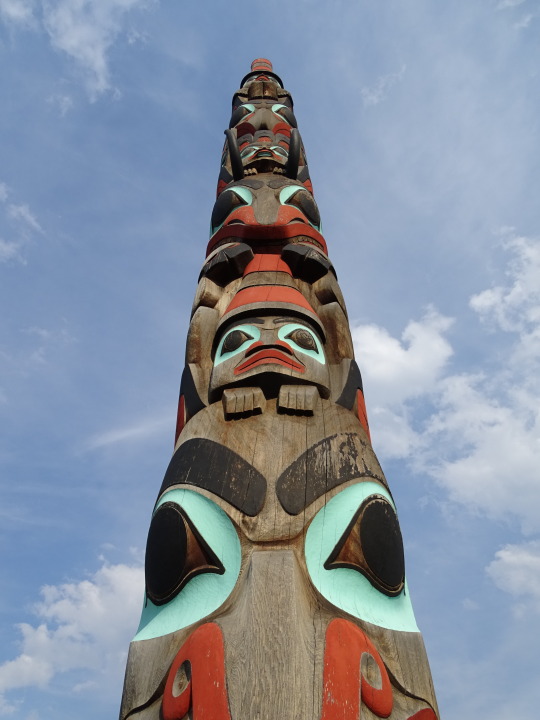




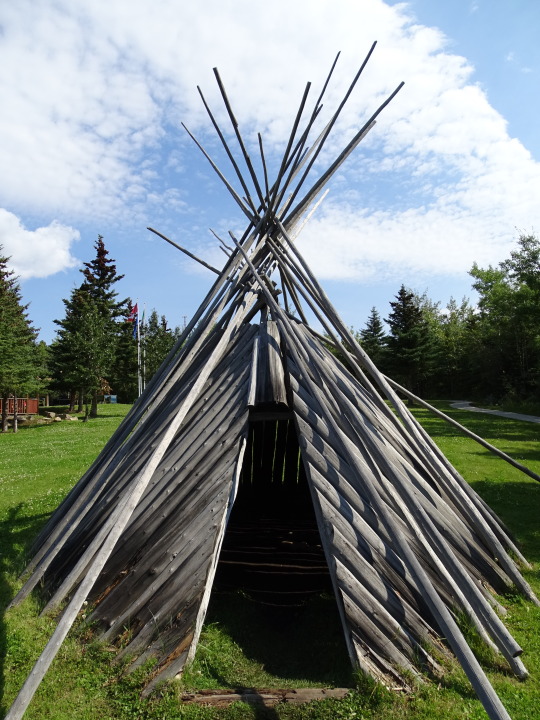





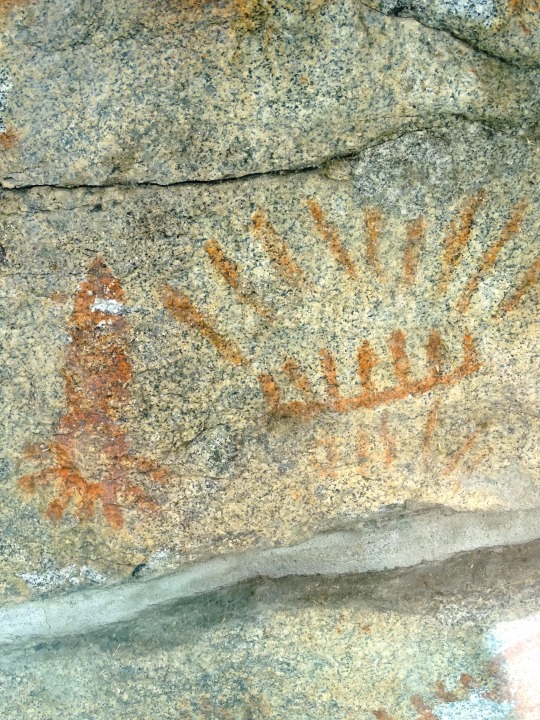
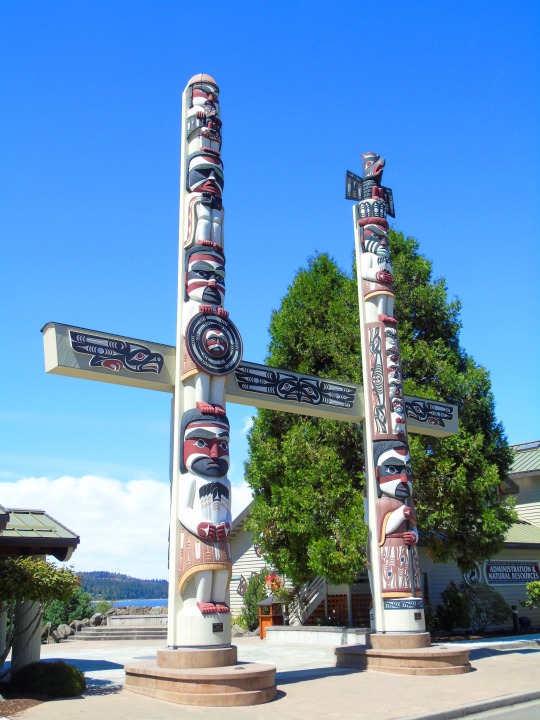










Indigenous Peoples’ Day/National Native American Day
Coming together to honor and learn from the rich heritage and wisdom of those who've lived on American soil for generations.
Appreciating and paying respect to the unique heritage and culture of those whose origins are native to the Americas, Indigenous Peoples’ Day offers the opportunity to honor, learn, celebrate and raise awareness.
History of Indigenous Peoples’ Day
Honoring Native American people throughout the United States, Indigenous Peoples’ Day was first officially celebrated in the US in 2021, when US President Joe Biden became the first president to formally recognize the day. However, the idea for the day goes back much further.
In 1977, the United Nations in Geneva, Switzerland sponsored the International Conference on Discrimination Against Indigenous Populations in the Americas. Part of the purpose was to begin celebrating Indigenous Peoples’ Day, particularly with the idea of replacing the adoration and glorification of Christopher Columbus with recognition and acknowledgement of the native peoples of the land.
Columbus Day, which is an American holiday, falls on the second Monday of October in the United States, has been less revered in recent years. This is likely due to the fact that the indigenous peoples of the time had their lands and lives taken away from them by the settlers from Europe, and the American people are becoming more aware of the way history has been written only from the perspective of the white person.
In exchange for Columbus Day, many people in the United States have begun the celebration of Indigenous Peoples Day instead. Coinciding with the 500th anniversary of the arrival of Christopher Columbus on American soil, a celebration of Indigenous Peoples’ Day was organized on October 12, 1992 in Berkeley, California. Many other cities and towns have accepted and implemented something similar in their communities, including places such as Los Angeles, California and Washington, DC.
At least twelve of the United States do not celebrate Columbus Day, and the state of South Dakota celebrates Native American Day instead. Tribal governments in Oklahoma have also made declarations regarding the celebration of Native American Day.
How to Celebrate Indigenous Peoples’ Day
A wide spectrum of ways for Americans to celebrate Indigenous Peoples’ Day can be discovered and created. Consider implementing some of these ideas in honor of the day, or come up with some of your own clever ideas:
Attend an Indigenous Peoples’ Day Event
Those who have a family history as a Native American or other indigenous people should certainly take this time to celebrate their heritage! And those who don’t can definitely take the opportunity to support and enjoy learning more.
For people who live in certain places where the populations of indigenous peoples groups are strong, like Arizona, California, Oklahoma, South Dakota and many other states, it is likely that some exciting events, educational programs and celebrations will be on the calendar! Join in on a parade, learn a native craft, or listen to a lecture on history.
Even better, brush up on current events of the indigenous peoples in the local area to see what ways it is possible to learn more about their plight, make a donation or even act as an advocate to raise awareness in the community.
Re-Learn United States History
With the recognition that history over the first 200 years of the United States was written from the perspective of the white person, perhaps National Indigenous Peoples’ Day would be a time, especially for white Americans, to consider a different perspective. Get beyond what was taught in school and get educated on how the story actually happened before the territory of what is now the United States was settled.
Read some books, watch some documentaries and do some research on websites to find out more. Consider some of these books for getting more educated:
An Indigenous Peoples’ History of the United States by Roxanne Dunbar-Ortiz
Lies My Teacher Told Me: Everything Your American History Book Got Wrong by James W. Loewen
The People: A History of Native America by R. David Edmunds
A True History of the United States: Indigenous Genocide, Radicalized Slavery, Hyper-Capitalism, Militarist Imperialism and Other Overlooked Aspects of American Exceptionalism by Daniel Sjursen
Support an Indigenous People Artist or Community
Often revered for their creativity and attention to detail, many indigenous people tribes produce artwork and handicrafts that are valuable and beautiful. Consider making a trip to a place that supports the arts of native peoples and make a purchase of pottery, blankets, jewelry, painting or some other amazing piece of art to add to your collection.
Visit an Indigenous Peoples’ Museum
Take the hands-on approach to learning more about the people who first inhabited the Americas by visiting a museum or exhibit dedicated to their culture and people. Try out one of these or visit one more local to the area:
Museum of Indigenous People (formerly the Smoki Museum). Located in Prescott, Arizona, this museum works to instill understanding and respect for the people of indigenous cultures, particularly those in the southwestern parts of the United States. The museum holds events, offers membership and even hosts a consignment market.
National Museum of the American Indian. This Smithsonian museum boasts two locations, one in the Washington DC mall and one in New York City. They offer access to various collections and exhibits as well as educational programs, online resources, and presentations with the intent to pay respect and honor to the native and indigenous peoples of the Americas.
Heard Museum. Situated in a vitally important place for Native Americans, this Phoenix, Arizona location focuses on the tribes and people of the Southwest. Exhibitions include handicrafts such as weaving and textiles as well as jewelry, clothing and more. Ages range from prehistoric to contemporary and everything in between. The Heard Museum is also the place where the World Hoop Dance Championship takes place each year!
The Eiteljorg Museum. Located in the center of Indianapolis, Indiana, this museum showcases paintings, sculptures, weaving, pottery, artifacts and even evidence of storytelling. With festivals, educational programs, events and even an annual Indian market, this museum is a fun one to visit and learn.
Source
#survivors of Whitehorse Indian Mission School by Ken Anderson#Finding Peace Monument by Halain De Repentigny#The Gather-Ring by Manuel Báez and Charlynne Lafontaine#Native American flute#Monument Valley Navajo Tribal Park#USA#Diné#Mesa Verde National Park#Jamestown S'Klallam Tribe#Wabanki Canoe#Ottawa#original photography#tourist attraction#landscape#Canada#jingle dance#Whitehorse#Wickiup#Grande Cache#rock painting#petroglyphs#travel#vacation#landmark#cityscape#Jasper National Park#Holbrook#Vancouver#Montezuma Castle National Monument#First Nations
1 note
·
View note
Text













Canada’s National Indigenous Peoples Day
Learn about the various cultures and traditions of Canada’s Indigenous People, or join an event or ceremony to see how they have been preserved over time.
The culture, language and social systems of the original inhabitants of our world have had a significant impact on how we live our lives today. Canada’s National Indigenous Peoples Day is all about focusing on the contribution that these groups have made to our societies and helping people to learn about their heritage and culture. By celebrating this day, we can help keep Indigenous languages, traditions and culture alive for future generations.
Learn About Canada’s National Indigenous Peoples Day
The day officially first began in Canada in 1996, to celebrate the contributions and history of the Métis, Inuit and First Nation peoples. Since then, the day has been observed and celebrated internationally. Originally organized on the Summer Solstice (when the different peoples sometimes celebrate their heritage on the longest day of the year), the day’s events often include traditional feasts from each Indigenous People, festivals, dances, and the opportunity for people of all ages to learn about traditions, spiritual beliefs and culture. You might be lucky enough to see a sacred fire extinguishing ceremony or participate in a feast with a traditionally prepared meal.
It’s all about bringing people together from different walks of life to share in the contributions of Indigenous People to our society. You’ll find an eclectic mix of contemporary and traditional music while learning about how Indigenous Peoples helped to develop our agriculture, language and social customs. The day is also about how governments are creating crucial partnerships with Indigenous Peoples to protect their land, heritage and culture in modern times.
You can all get involved as the website has educational material for the whole family. There are also awareness events hosted in schools and local communities. If people want to get more involved they can even submit their ideas to get them registered as part of the event, so there are hundreds of opportunities to get involved. It also forms part of more extensive celebrations over an entire month that includes days like Multiculturalism Day and overall, aims to celebrate people from all walks of life and culture.
History of Canada’s National Indigenous Peoples Day
The day was officially recognized in Canada by the Governor-General of Canada Roméo LeBlanc in 1996. A year earlier in 1995, the Royal Commission on Aboriginal Peoples put forward the idea for the day to be created. The Royal Commission on Aboriginal Peoples was a Commission put forward to reconcile the relationship between the Métis, Inuits and First Nation peoples and the Canadian Government. In 1996, Aboriginal Day was born, later changed to Canada’s National Indigenous Peoples Day in 2017.
In 1995, it wasn’t just the Royal Commission on Aboriginal Peoples that suggested the day should be celebrated. A team of non-Indigenous and Indigenous peoples gathered and named themselves the Sacred Assembly. Chaired by Elijah Harper (Canadian Politician and Chief of the Red Sucker Lake First Nations) they called for a day for Indigenous Peoples to be celebrated and recognized for their contributions to our society. In 1982, what is now known as the Assembly of First Nations, set the path for the creation of this day, which led to Quebec recognizing the day as early as 1990.
However, there has been chatter about creating this day since 1945, when the day was first termed as ‘Indian Day’ by First Nation Chiefs, led by Jules Sioui. Jules Sioui was part of Huron Wendake First Nation and led two conventions during World War II which started to challenge the rights of Indigenous Peoples. The first meeting was chaired in 1943 in Ottawa and was attended by 53 people. The conference grew remarkably, and in 1944 was attended by four times as many people. Since then calls for a day of recognition have gained increasing traction and popularity.
Meanwhile, in late-1970s America, an International Conference began to suggest that America should host a celebration of its Indigenous peoples on Columbus Day. In 1989, it was first celebrated by South Dakota, and by 2019 was observed by multiple towns and states, including Louisiana, Dallas and Vermont. Brazil has also been celebrating since 1943, by decree of the then President, Getúlio Vargas. The UN also launched International Day of the World’s Indigenous Peoples in 1994, celebrating worldwide contributions from global Indigenous populations.
The United Nations had issued a Declaration on the Rights of Indigenous Peoples (UNDRIP) in 2007, which aimed to create a global framework for the preservation, dignity and well-being of each Indigenous culture. This process started in 1982, when the UN created the Working Group on Indigenous Populations, to discuss the discrimination that Indigenous Peoples had faced worldwide.
How To Celebrate Canada’s National Indigenous Peoples Day
This is the perfect time to learn about different Indigenous Peoples and their cultures and traditions. For example, in Canada, this day celebrates the First Nations, Inuit and Métis cultures. Why not learn about the Michif language of the Métis, or find out more about the storytelling traditions of the Inuits? Learning about the separate cultures will help us to understand how each independent group contributed to many of the things in society we take for granted today.
Why not get involved in a local event and participate in a traditional feast or watch a sacred ceremony? Dive right in and download some of the online material – why have some fun with family and friends and learn about Indigenous Peoples in the process? If you don’t have an event near you, why not host your own and reach out to the local Indigenous community for some assistance.
Learning about the history of Indigenous Peoples is also part of understanding why a day of celebration is so vital for preserving cultures today. From land disputes to reconciling with Governments across the world, the story for all Indigenous People has not been an easy one.
Luckily now we can preserve and enjoy all Indigenous cultures and appreciate the vast contribution that has been and is still being made today. So get stuck in, participate in a traditional event and learn all you can about different cultures. Help us send a big thank you to the original inhabitants of our planet for making it what it is today.
Source
#The Gather-Ring by Manuel Báez and Charlynne Lafontaine#Ottawa#Anishinabe culture#Jump! by Naomi Ratte#Montreal First Peoples Festival#Lower Fort Garry National Historic Site of Canada#Canada’s National Indigenous Peoples Day#CanadasIndigenousPeoplesDay#21 June#Stanley Park#Vancouver#summer 2018#2015#2012#travel#original photography#vacation#tourist attraction#cityscape#landmark#Dorset Paleo Eskimo settlement#Inuit
0 notes
Photo










National Day of Mourning
United States history dictates the vast amounts of immigration and colonization that exceeded European Imperialism. However, Native Americans who have suffered at the loss of their homelands recognize this mourning.
So, since 1970, participants have created an annual protest called the Day of Mourning to honor Native ancestors and their struggles to survive today. While the holiday coincides with Thanksgiving, the goal of this day is to educate people about Native American history.
History of Day of Mourning
While the story of Thanksgiving tells about a mutual benefit between the Pilgrims and Native Americans, this holiday tells a different side of history. The United American Indians of New England (UAINE) created this holiday to publicize the democide and misrepresentation of Native Americans.
The UANIE is a Native-led, self-supporting organization advocating for the recognition of struggles of Native Americans and political prisoners.
The day was founded based off of an experience one Native had. According to their website, Wamsutta, an Aquinnah Wampanoag man, had been asked to speak at a fancy Commonwealth of Massachusetts banquet celebrating the 350th anniversary of the landing of the Pilgrims and asked for a copy of the speech.
Within days Wamsutta was told by a representative of the Department of Commerce and Development that he would not be allowed to give the speech. Since then, UANIE asks participants to partake in the Day of Mourning to understand the racism and oppression they faced, as well as find a spiritual remembrance of those throughout history.
Their main location for their activities takes place in Cole’s Hill, Plymouth, Massachusetts. They invite speakers and march through the Plymouth district in hopes of understanding the truth about history and the misrepresentation of it throughout generations.
How to celebrate Day of Mourning
The UANIE starts with a day of fasting, from sundown to the afternoon of that day to mourn. Then they have political speakers attend and bring food so people can break their fast. Then they march throughout the district to protest.
While it takes place in New England, its message is aimed at America, and anyone all over can participate. Since it takes place on Thanksgiving, while your family gathers together to create feasts, you can take the time to fast beforehand and research Native American history.
While it is centered around Native Americans, people of all races and backgrounds can participate in a Day of Mourning and mourn with them.
Source
#Un monument pour Mary Ann by Jean-Robert Drouillard#Quebec City#Québec#National Day of Mourning#NationalDayOfMourning#25 November 2021#travel#fourth Thursday in November#Native American history#Ottawa#Ontario#Anishinaabe Scout by Hamilton MacCarthy#Canada#USA#public art#BC#The Gather-Ring by Manuel Báez and Charlynne Lafontaine#summer 2018#2012#Vancouver#British Columbia#Montezuma Castle National Monument#totem pole#Klahowya Village#Diné#Navajo#Wabanki Canoe#Jamestown S'Klallam Tribe#Founding Fathers by Dale Faulstich
8 notes
·
View notes
Photo










Clouds (No. 199)
The Gather-Ring by Manuel Báez and Charlynne Lafontaine, Ottawa (three pics)
St Peters Lutheran Church, Ottawa
Canadian War Museum,Ottawa (two pics)
Christ Church Cathedral Ottawa (two pics)
Château Laurier National Historic Site of Canada, Ottawa (two pics)
#The Gather-Ring by Manuel Báez and Charlynne Lafontaine#Ottawa#Ontario#Canada#summer 2018#public art#cityscape#original photography#travel#vacation#Canadian War Museum#Christ Church Cathedral Ottawa#architecture#Château Laurier National Historic Site of Canada#Fairmont Château Laurier#I really love the first pic#landmark#tourist attraction#sky#clouds
11 notes
·
View notes
Photo










National Aboriginal Day
National Aboriginal Day (French: Journée nationale des Autochtones) is a day recognising and celebrating the cultures and contributions of the First Nations, Inuit and Métis peoples of Canada. The day was first celebrated in 1996, after it was proclaimed that year by then Governor General of Canada Roméo LeBlanc, to be celebrated on 21 June annually.
21 June was chosen as the statutory holiday for many reasons-including its cultural significance as the Summer solstice, and the fact that it is a day on which many Aboriginal groups traditionally celebrate their heritage.
The day of recognition came about after a series of calls for such a celebration. In 1982, the National Indian Brotherhood (now the Assembly of First Nations) called for the creation of a National Aboriginal Solidarity Day to be celebrated on 21 June. Slightly more than a decade later in 1995, the Royal Commission on Aboriginal Peoples recommended that a National First Peoples Day be designated. Also in that same year, a national conference of Aboriginal and non-Aboriginal people chaired by Elijah Harper, titled The Sacred Assembly, called for a national holiday to celebrate the contributions of Aboriginal peoples to Canada. 21 June often coincides with the summer solstice.
National Aboriginal Day is now part of a series of Celebrate Canada days, beginning with National Aboriginal Day and followed by the National Holiday of Quebec on 24 June, Canadian Multiculturalism Day on 27 June, and concluding with Canada Day on 1 July.
In 2001, members of the 14th Legislative Assembly passed the National Aboriginal Day Act making the Northwest Territories the first jurisdiction in Canada to recognise this day as a formal statutory holiday.
Source
#The Gather-Ring by Manuel Báez and Charlynne Lafontaine#Ottawa#Ontario#Canada#National Aboriginal Day#Journée nationale des Autochtones#public art#summer 2018#2015#2012#original photography#travel#vacation#NationalAboriginalDay#21 June#Sylvia Tennisco#Tony Amikons#Pikwakanagan First Nation#Jump! by Naomi Ratte#Peguis#Lower Fort Garry National Historic Site#Vancouver#Klahowya Village#Cape Ray#Dorset Paleo Eskimo settlement#Inuit#Montreal First Peoples Festival#totem pole
1 note
·
View note
Photo










Day of Mourning
United States history dictates the vast amounts of immigration and colonization that exceeded European Imperialism. However, Native Americans who have suffered at the loss of their homelands recognize this mourning.
So, since 1970, participants have created an annual protest called the Day of Mourning to honor Native ancestors and their struggles to survive today. While the holiday coincides with Thanksgiving, the goal of this day is to educate people about Native American history.
History of Day of Mourning
While the story of Thanksgiving tells about a mutual benefit between the Pilgrims and Native Americans, this holiday tells a different side of history. The United American Indians of New England (UAINE) created this holiday to publicize the democide and misrepresentation of Native Americans.
The UANIE is a Native-led, self-supporting organization advocating for the recognition of struggles of Native Americans and political prisoners.
The day was founded based off of an experience one Native had. According to their website, Wamsutta, an Aquinnah Wampanoag man, had been asked to speak at a fancy Commonwealth of Massachusetts banquet celebrating the 350th anniversary of the landing of the Pilgrims and asked for a copy of the speech.
Within days Wamsutta was told by a representative of the Department of Commerce and Development that he would not be allowed to give the speech. Since then, UANIE asks participants to partake in the Day of Mourning to understand the racism and oppression they faced, as well as find a spiritual remembrance of those throughout history.
Their main location for their activities takes place in Cole’s Hill, Plymouth, Massachusetts. They invite speakers and march through the Plymouth district in hopes of understanding the truth about history and the misrepresentation of it throughout generations.
How to celebrate Day of Mourning
The UANIE starts with a day of fasting, from sundown to the afternoon of that day to mourn. Then they have political speakers attend and bring food so people can break their fast. Then they march throughout the district to protest.
While it takes place in New England, its message is aimed at America, and anyone all over can participate. Since it takes place on Thanksgiving, while your family gathers together to create feasts, you can take the time to fast beforehand and research Native American history.
While it is centered around Native Americans, people of all races and backgrounds can participate in a Day of Mourning and mourn with them.
Source
#Day of Mourning#fourth Thursday in November#28 November 2019#USA#Canada#Québec#original photography#public art#Ottawa#sculpture#Un monument pour Mary Ann by Jean-Robert Drouillard#buste#summer 2018#The Gather-Ring by Manuel Báez and Charlynne Lafontaine#Ontario#Quebec City#Anishinaabe Scout by Hamilton MacCarthy#Vancouver#2012#Klahowya Village#Navajo#Holbrook#2014#Montezuma Castle National Monument#Wabanki Canoe#Founding Fathers by Dale Faulstich#Jamestown S'Klallam Tribe
2 notes
·
View notes
Photo










World Art Day
World Art Day comes on April 15 of every year. World Art Day is celebrated to promote awareness about the creative activity across the worldwide. Art is a broad range of human activities in creating the visual, auditory or performing the artefacts, expressing their creative or technical skill, which intended to be appreciated for their beauty and emotional power. Art comes in various forms, but the main categories (first founded in ancient Greece) were Painting, Architecture, Music, Sculpting, Dance, and Literature. In 1911 Cinema, was added as a seventh art by Ricciotto Canudo.
“Excellence is an art won by training and habituation. We do not act rightly because we have virtue or excellence, but we rather have those because we have acted rightly. We are what we repeatedly do. Excellence, then, is not an act but a habit.” – Aristotle
History of World Art Day
The IAA (International Association of Art) designed the day April 15 as World Art Day. The main idea is to create a day for all the lovers of art and artists in the world to celebrate, not only the members of International Association of Art (IAA). The aim is to create a day to emphasise the importance of art in the lives of everyone, of all ages and races. Every art centre, gallery, University, Museum, and artist are free to organize their activities. April 15 was chosen in honour of Leonardo Da Vinci’s birthday, who is considered a symbol of multiculturalism, free expression, world peace, tolerance, and visionary in the world of arts. Events on this day can vary from special museum hours to conferences and special exhibitions. Hence World Art Day will permit to all the art lovers and artists of the world, to feel the preciousness and the power of art simultaneously and let all of us breathe it is vital for all the nations of the world.
How to Celebrate the World Art Day
Celebrating the World Art Day is quite simple and very easy to remember. Just feel the power and the preciousness of art and spread awareness about the creative activity across the worldwide. If you are talented in some activities like painting, drawing, etc., just draw some pictures and show them to your family members or friends.
Source
#World Art Day#WorldArtDay#15 April#Public Art#original photography#usa#Atlas by Lee Lawrie and Rene Paul Chambellan#hebe#Rose by PLAYLAB INC#night shot#summer vacation#travel#New York City#ottawa#canada#The Cube by Isamu Noguchi#Anishinaabe Scout by Hamilton MacCarthy#buffalo#The Hiker by Allen George Newman#The Gather-Ring by Manuel Báez and Charlynne Lafontaine#Québec#Éclatement II by Charles Daudelin#Epic 8000 by Nike Savvas#san francisco#Alouette by Brandon Vickerd#Van Gogh Observes (2018) by Joe Fafard#toronto
3 notes
·
View notes
Photo










Canada’s National Indigenous Peoples Day
Learn about the various cultures and traditions of Canada’s Indigenous People, or join an event or ceremony to see how they have been preserved over time.
The culture, language and social systems of the original inhabitants of our world have had a significant impact on how we live our lives today. Canada’s National Indigenous Peoples Day is all about focusing on the contribution that these groups have made to our societies and helping people to learn about their heritage and culture. By celebrating this day, we can help keep Indigenous languages, traditions and culture alive for future generations.
Learn About Canada’s National Indigenous Peoples Day
The day officially first began in Canada in 1996, to celebrate the contributions and history of the Métis, Inuit and First Nation peoples. Since then, the day has been observed and celebrated internationally. Originally organized on the Summer Solstice (when the different peoples sometimes celebrate their heritage on the longest day of the year), the day’s events often include traditional feasts from each Indigenous People, festivals, dances, and the opportunity for people of all ages to learn about traditions, spiritual beliefs and culture. You might be lucky enough to see a sacred fire extinguishing ceremony or participate in a feast with a traditionally prepared meal.
It’s all about bringing people together from different walks of life to share in the contributions of Indigenous People to our society. You’ll find an eclectic mix of contemporary and traditional music while learning about how Indigenous Peoples helped to develop our agriculture, language and social customs. The day is also about how governments are creating crucial partnerships with Indigenous Peoples to protect their land, heritage and culture in modern times.
You can all get involved as the website has educational material for the whole family. There are also awareness events hosted in schools and local communities. If people want to get more involved they can even submit their ideas to get them registered as part of the event, so there are hundreds of opportunities to get involved. It also forms part of more extensive celebrations over an entire month that includes days like Multiculturalism Day and overall, aims to celebrate people from all walks of life and culture.
History of Canada’s National Indigenous Peoples Day
The day was officially recognized in Canada by the Governor-General of Canada Roméo LeBlanc in 1996. A year earlier in 1995, the Royal Commission on Aboriginal Peoples put forward the idea for the day to be created. The Royal Commission on Aboriginal Peoples was a Commission put forward to reconcile the relationship between the Métis, Inuits and First Nation peoples and the Canadian Government. In 1996, Aboriginal Day was born, later changed to Canada’s National Indigenous Peoples Day in 2017.
In 1995, it wasn’t just the Royal Commission on Aboriginal Peoples that suggested the day should be celebrated. A team of non-Indigenous and Indigenous peoples gathered and named themselves the Sacred Assembly. Chaired by Elijah Harper (Canadian Politician and Chief of the Red Sucker Lake First Nations) they called for a day for Indigenous Peoples to be celebrated and recognized for their contributions to our society. In 1982, what is now known as the Assembly of First Nations, set the path for the creation of this day, which led to Quebec recognizing the day as early as 1990.
However, there has been chatter about creating this day since 1945, when the day was first termed as ‘Indian Day’ by First Nation Chiefs, led by Jules Sioui. Jules Sioui was part of Huron Wendake First Nation and led two conventions during World War II which started to challenge the rights of Indigenous Peoples. The first meeting was chaired in 1943 in Ottawa and was attended by 53 people. The conference grew remarkably, and in 1944 was attended by four times as many people. Since then calls for a day of recognition have gained increasing traction and popularity.
Meanwhile, in late-1970s America, an International Conference began to suggest that America should host a celebration of its Indigenous peoples on Columbus Day. In 1989, it was first celebrated by South Dakota, and by 2019 was observed by multiple towns and states, including Louisiana, Dallas and Vermont. Brazil has also been celebrating since 1943, by decree of the then President, Getúlio Vargas. The UN also launched International Day of the World’s Indigenous Peoples in 1994, celebrating worldwide contributions from global Indigenous populations.
The United Nations had issued a Declaration on the Rights of Indigenous Peoples (UNDRIP) in 2007, which aimed to create a global framework for the preservation, dignity and well-being of each Indigenous culture. This process started in 1982, when the UN created the Working Group on Indigenous Populations, to discuss the discrimination that Indigenous Peoples had faced worldwide.
How To Celebrate Canada’s National Indigenous Peoples Day
This is the perfect time to learn about different Indigenous Peoples and their cultures and traditions. For example, in Canada, this day celebrates the First Nations, Inuit and Métis cultures. Why not learn about the Michif language of the Métis, or find out more about the storytelling traditions of the Inuits? Learning about the separate cultures will help us to understand how each independent group contributed to many of the things in society we take for granted today.
Why not get involved in a local event and participate in a traditional feast or watch a sacred ceremony? Dive right in and download some of the online material – why have some fun with family and friends and learn about Indigenous Peoples in the process? If you don’t have an event near you, why not host your own and reach out to the local Indigenous community for some assistance.
Learning about the history of Indigenous Peoples is also part of understanding why a day of celebration is so vital for preserving cultures today. From land disputes to reconciling with Governments across the world, the story for all Indigenous People has not been an easy one.
Luckily now we can preserve and enjoy all Indigenous cultures and appreciate the vast contribution that has been and is still being made today. So get stuck in, participate in a traditional event and learn all you can about different cultures. Help us send a big thank you to the original inhabitants of our planet for making it what it is today.
Source
#The Gather-Ring by Manuel Báez and Charlynne Lafontaine#Ottawa#Ontario#Anishinabe culture#Jump! by Naomi Ratte#Peguis First Nation#Cape Ray#Dorset Paleo Eskimo settlement#Inuit#Montreal First Peoples Festival#travel#Lower Fort Garry National Historic Site of Canada#Stanley Park#Vancouver#Klahowya Village#totem pole#Canada’s National Indigenous Peoples Day#CanadasNationalIndigenousPeoplesDay#21 June#summer 2015#2012#2018#vacaiton#original photography
1 note
·
View note
Photo










National Aboriginal Day (French: Journée nationale des Autochtones) is a day recognising and celebrating the cultures and contributions of the First Nations, Inuit and Métis peoples of Canada. The day was first celebrated in 1996, after it was proclaimed that year by then Governor General of Canada Roméo LeBlanc, to be celebrated on 21 June annually.
21 June was chosen as the statutory holiday for many reasons-including its cultural significance as the Summer solstice, and the fact that it is a day on which many Aboriginal groups traditionally celebrate their heritage.
The day of recognition came about after a series of calls for such a celebration. In 1982, the National Indian Brotherhood (now the Assembly of First Nations) called for the creation of a National Aboriginal Solidarity Day to be celebrated on 21 June. Slightly more than a decade later in 1995, the Royal Commission on Aboriginal Peoples recommended that a National First Peoples Day be designated. Also in that same year, a national conference of Aboriginal and non-Aboriginal people chaired by Elijah Harper, titled The Sacred Assembly, called for a national holiday to celebrate the contributions of Aboriginal peoples to Canada. 21 June often coincides with the summer solstice.
National Aboriginal Day is now part of a series of Celebrate Canada days, beginning with National Aboriginal Day and followed by the National Holiday of Quebec on 24 June, Canadian Multiculturalism Day on 27 June, and concluding with Canada Day on 1 July.
In 2001, members of the 14th Legislative Assembly passed the National Aboriginal Day Act making the Northwest Territories the first jurisdiction in Canada to recognise this day as a formal statutory holiday.
Source
#The Gather-Ring by Manuel Báez and Charlynne Lafontaine#Ottawa#Canada#National Aboriginal Day#NationalAboriginalDay#First Nations#public art#original photography#Sylvia Tennisco & Tony Amikons#summer 2018#2012#2015#Vancouver#Lower Fort Garry#Dorset Paleo Eskimo settlement#Inuit#Jump! by Naomi Ratte#Montréal#National Indigenous Peoples Day
0 notes
Photo










National Aboriginal Day
National Aboriginal Day (French: Journée nationale des Autochtones) is a day recognising and celebrating the cultures and contributions of the First Nations, Inuit and Métis peoples of Canada. The day was first celebrated in 1996, after it was proclaimed that year by then Governor General of Canada Roméo LeBlanc, to be celebrated on 21 June annually.
21 June was chosen as the statutory holiday for many reasons-including its cultural significance as the Summer solstice, and the fact that it is a day on which many Aboriginal groups traditionally celebrate their heritage.
The day of recognition came about after a series of calls for such a celebration. In 1982, the National Indian Brotherhood (now the Assembly of First Nations) called for the creation of a National Aboriginal Solidarity Day to be celebrated on 21 June. Slightly more than a decade later in 1995, the Royal Commission on Aboriginal Peoples recommended that a National First Peoples Day be designated. Also in that same year, a national conference of Aboriginal and non-Aboriginal people chaired by Elijah Harper, titled The Sacred Assembly, called for a national holiday to celebrate the contributions of Aboriginal peoples to Canada. 21 June often coincides with the summer solstice.
National Aboriginal Day is now part of a series of Celebrate Canada days, beginning with National Aboriginal Day and followed by the National Holiday of Quebec on 24 June, Canadian Multiculturalism Day on 27 June, and concluding with Canada Day on 1 July.
In 2001, members of the 14th Legislative Assembly passed the National Aboriginal Day Act making the Northwest Territories the first jurisdiction in Canada to recognise this day as a formal statutory holiday.
Source
#The Gather-Ring by Manuel Báez and Charlynne Lafontaine#Ottawa#Ontario#National Aboriginal Day#Journée nationale des Autochtones#Sylvia Tennisco & Tony Amikons#Pikwakanagan First Nation#Jump! by Naomi Ratte#Peguis First Nation#Cape Ray#Newfoundland#2015#summer 2018#Inuit#Dorset Paleo Eskimo settlement#2012#Vancouver#Montreal First Peoples Festival#Klahowya Village#Stanley Park#Lower Fort Garry National Historic Site of Canada#21 June
2 notes
·
View notes
Photo










Inspire Your Heart With Art Day
Inspire Your Heart With Art Day is an annual celebration observed on January 31st of every year. Art is a thing that is in existence since the start of the human civilization. It is appreciated both for its beauty and happiness it gives to those who see it. There are different forms of arts like paintings, music, theatre, sculptures, dance or poetry and they are indeed to be celebrated with a Day in the calendar. Take time to visit the nearest gallery, theatre, cinema, music venue on the Inspire Your Heart With Art Day and get inspired.
“The purpose of art is washing the dust of daily life off our souls.” – Pablo Picasso
History of Inspire Your Heart With Art Day
The history, origin, and the year since the Inspire Your Heart With Art Day has been in the celebration are unknown. The founder of this Day is also not known precisely. However, the celebration Day for the art has been promoted by various arts organizations. The Day is created as to celebrate all forms of art and the effect it has on your heart. Explore the many genres of art as every form of art is valued and appreciated for every other reason. Art is a form of feel that inspires, encourages, and it touches one’s soul, heart and mind. The Day is the best time to have a closer look at the art and find what the artist is trying to say through it. Open up your mind and heart to listen to the art as it has the power to inspire our hearts.
Art refers to the diverse range of human activities including the painting, sculpture, photography, printmaking, and other visual media. Creation of images or objects, visual arts marks the oldest documented forms of art. The archaeologists have found the first artefacts of human art, and it dates back to the Stone Age. Over the years, various art forms have developed. It is appreciated for a variety of reasons although it doesn’t have any practical value. Art let the person express his own imagination and creativity. It is also a form of communication that bridges the gap over the language barrier. Art plays a major role in various aspects like in the entertainment of therapy, for raising awareness and in evoking all sorts of emotions.
How to Celebrate Inspire Your Heart With Art Day
Celebrating Inspire Your Heart With Art Day is quite simple. You can visit the nearest museum to look at the paintings, art, sculpture, and others ancient historical, artistic evidence. Take some time to read out some good books, listen to music, watch a dance performance or film. Take this Day as the best chance to analyse your area of interest in the field of arts. You can even indulge yourself in doing any of them if you have skills. Let out your artistic skills on inspiring others heart. Celebrate every artist you know on this special Day.
Source
#Columbus by Gaetano Russo#Inspire Your Heart With Art Day#31 January#usa#public art#sculpture#original photography#national day#travel#InspireYourHeartWithArtDay#summer 2018#canada#vacation#cityscape#Alouette by Brandon Vickerd#The Gather-Ring by Manuel Báez and Charlynne Lafontaine#Anishinaabe Scout by Hamilton MacCarthy#One Hundred Foot Line#Maman (1999) by Louise Bourgeois#Rose by PLAYLAB INC.#the bean#2017#2016#cloud gate by Anish Kapoor#The Cube by Isamu Noguchi
0 notes
Photo










Clouds (No. 198)
Peace Tower, Ottawa (seven pics)
Ottawa River
Ottawa
The Gather-Ring by Manuel Báez and Charlynne Lafontaine, Ottawa
#Peace Tower#Jean Omer Marchand#John A. Pearson#Perpendicular Gothic#Ottawa#Ontario#Canada#blue sky#clouds#Flag of Canada#landmark#Maple Leaf Flag#clock#Tour de la Paix#Centre Block#Library of Parliament#Parliament Hill#cityscape#architecture#original photography#summer 2018#Victorian High Gothic#Mackenzie Tower#Ottawa River#The Gather-Ring by Manuel Báez and Charlynne Lafontaine#public art
5 notes
·
View notes